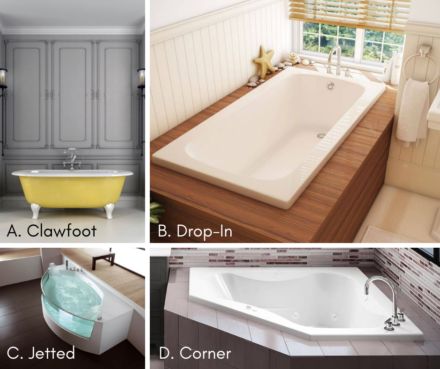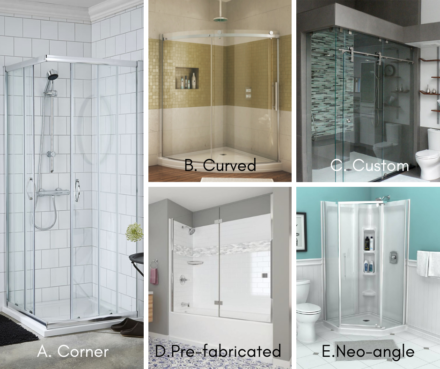We are washing away the last bits of 2020, and finishing up our bathroom renovation series, by focusing on bathtubs and showers. While there are both a number of different kinds of shower and tub available, we will only be covering some of the most common as well as some of the most popular options out there.
 BATHTUBS
BATHTUBS
ALCOVE. The alcove bathtub is a classic choice and is one that you have encountered on a number of occasions. The alcove tub is surrounded by three walls and often includes a shower option. (Which is great for families with kids or pets!) Although there are many types and styles of alcove tubs, they remain relatively inexpensive and are more easily installed.
CORNER. Corner bathtubs are similar to alcove tubs in that they help maximize space in your bathroom. Unlike the alcove, they typically do not include a shower option; however, due to their distinct use of space, they allow for more creative design in the bathroom.
CLAWFOOT/FREESTANDING. In recent years, there has been a resurgence of clawfoot/freestanding tubs. Clawfoot tubs are often used in vintage design and can be an elegant focal point in your bathroom. The same is true of freestanding tubs, which can offer many luxury features (e.g. whirlpool/air effects), but may offer a more contemporary and modern aesthetic.
DROP-IN & UNDERMOUNT. Drop-in bathtubs are “dropped in” an existing frame, which results in a slight “lip” or lifted edge around the tub. These bathtubs are opposite to undermount bathtubs, which are mounted to the underside of marble or stone to give the bathtub clean lines and a spa-like feel.
JAPANESE. Japanese bathtubs are another luxury option (i.e. see clawfoot, freestanding, and undermount tubs). This tub is circular, with higher edges, and is freestanding in the room. The result is a smaller footprint in the bathroom as well as a focal point. Persons using a Japanese tub are meant to sit upright to soak rather than lie down.
 SHOWERS
SHOWERS
PRE-FABRICATED. Pre-fabricated showers include a shower pan as well as molded walls. They can come in 1-piece or in multiple pieces, which allow for easy moving and then installation. Bath/tub combos are often available. This is a popular option for most homes and is go-to for DIYers.
CORNER. Corner showers include two walls and then two glass panels. (That’s it. Really.) It’s a popular choice – it can save space in a smaller bathroom; it can be a focal point in a larger one; and it can be less expensive than a curved shower option.
CURVED. Curved showers seek to maximize space in your bathroom. The curved shower includes two walls and at least one large piece of curved glass. The end result is elegant and practical (it’s saving you square-footage!) but it also comes at a cost as curved showers are more expensive than corner or neo-angle options.
NEO-ANGLE. The neo-angle shower consists of two walls and then three pieces of glass. It is a compromise between a corner and a curved shower. It will save you some space, as it doesn’t take up as much room as a corner shower, and then some dollars because the enclosure includes three pieces of glass instead of one large one like a curved one.
CUSTOM. Call in the professionals if you want a custom shower. Choose your materials (e.g. marble, tile, etc.) and they will create the shower of your dreams, including installing luxury items such as a body shower, shower tower, or waterfall. Custom showers can be in the corner, curved, or even neo-angled. Whatever you’d like! They will also often improve the resale value on your home, if done correctly, which is pretty nice.
There you have it. Whether you are a tub person, a shower person, or both, listing and then assessing all of the options is the first step in planning your renovation. No matter your budget, changing out your tub/shower will significantly change the function and aesthetics in your bathroom.
